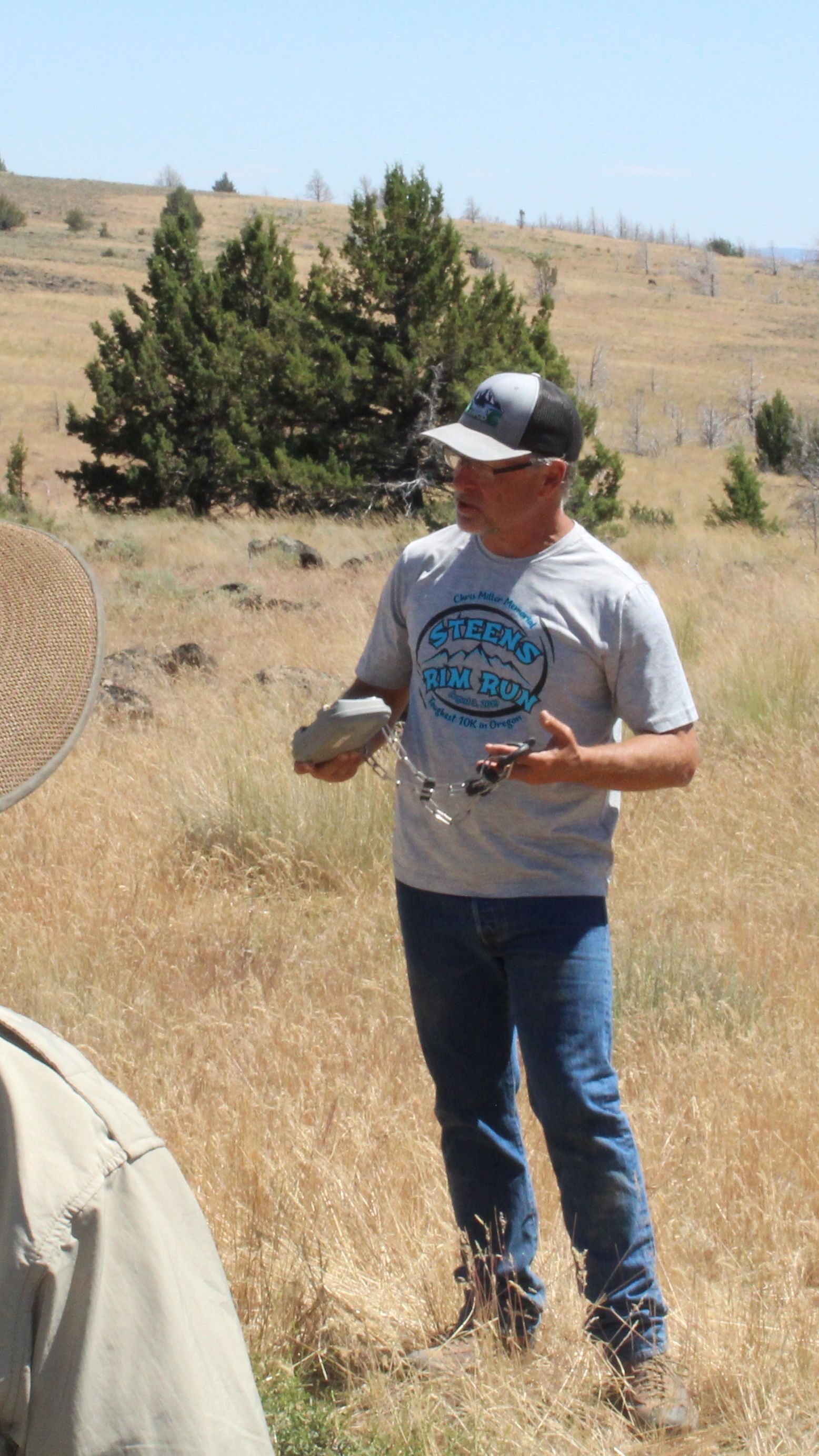Chad Boyd, Agricultural Research Service Range Scientist and Research Leader

Dr. Chad Boyd's first experiences in Harney County were in the 1990's when both he and his wife Amy were in graduate school. "When my wife Amy and I were in graduate school we had the opportunity to do some range consulting work in Harney County and we both really liked southeast Oregon, as well as the applied research focus of the Eastern Oregon Agriculture Research Center." Some time passed and while living in Oklahoma and in the final month of his PhD program Chad and his wife made the decision to to move to Harney County. In 1999 Chad went to work at EOARC for Oregon State University before shifting to work as research leader with the USDA Agricultural Research Service. "We were living in Oklahoma, and I was in the final month of my PhD program. Amy was in the middle of a phone interview for a research technician job here at EOARC when an F5 tornado took a turn straight toward our house. She asked the interview committee to hold on for a bit and we gathered up various animals and hustled into the storm shelter. Ultimately, the tornado lifted before hitting our house. We went back inside to find the interview committee still on the line, at which time, Amy accepted the job."
Prior to starting his career, Chad pursued a bank of education: a bachelor's in wildlife management from Texas Tech University, a masters in Rangeland Science from Utah State University and a PhD in Rangeland Ecology and Management from Oklahoma State University. "My first interest in natural resources was in wildlife populations and what makes them change over time. At some point I figured out that unless you are working with polar bears or a short list of other marine mammals, plants and changes in their abundance are squarely at the root of wildlife population dynamics. I then got really interested in how we can manage plant populations in ways that impact the fitness and abundance of the herbivores (domestic or wild animals whose diet is primarily made up of plants) that eat plants and how those herbivores influence plant populations. That’s when I transitioned to range science and management, and I’ve been in that field ever since."
As a Rangeland Scientist and Research Leader Chad's role with EOARC is a combination of administrative and science duties every day. "Combined administrative and science duties every day is somewhat of an adventure. I might be in meetings with ARS administrators or filling out employee performance evaluations in the morning and analyzing data or writing research papers in the afternoon. Ultimately my role is to conduct impactful science and enable others within our research unit to do the same. This is what I enjoy most about my work, bringing science and people together in a way that enriches agricultural livelihoods and the ecosystems upon which they depend."
Chad is an active participant with the Harney County Wildfire Collaborative providing both on-the-ground scientific knowledge as well as long-term perspective as this group grapples with the complex issue of wildfire resiliency. "The easiest way to do science is to wall yourself off from the rest of the world and focus on your research. However, if you do that, you’re doing science for the sake of doing science. If you want that science to actually have a tangible impact on the world around you, then you have to actively engage in that world. Involvement in the collaborative environment in Harney County is a primary vehicle for generating that sort of engagement and science impact; the wildfire collaborative provides that diverse outlet and helps our community proactively address a variety of wildfire concerns."
When Chad isn't working, he's an active volunteer in the community and enjoys spending time with his family, running, cooking, hunting and fishing, and playing the guitar.
